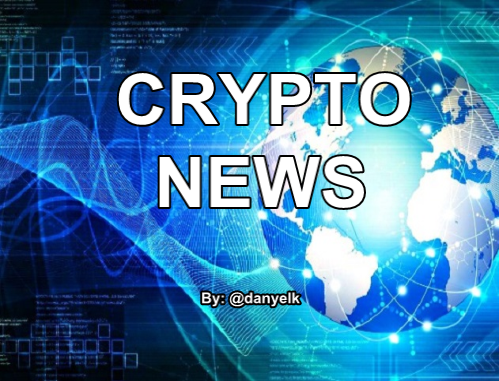
- Russian Central Bank warns about ICOs and crypto currencies!
- Maersk completes Insurance Test Program with Blockchain!
- Litecoin and Vertcoin - What's the Deal with this Joint Venture?
- DLT is not yet ready to replace the payment processing systems of the ECB and BoJ!

In a press release, the Russian Central Bank is addressing the potential risks that crypro currencies and ICOs can trigger.
One day after the ban on ICOs in China, Russia also expressed its opinion on the effects of initial coin offerings in its own country. In this context, the issue of crypto tokens in public crowd sales was classified as risky. The general circulation of crypto currencies and their use in Russia also entail high risks.
In particular, the way in which tokens are issued is considered to be problematic because it would attract the population's investment. This formulation goes in a similar direction to the statements of Deputy Russian Finance Minister Alexei Moiseev, who recently proposed limiting the trade in crypto currencies and restricting them exclusively to qualified investors. He thus implied what the central bank now seems to think: the crypto business is too dangerous for inexperienced Russian investors which should be protected.
It also states that the central bank will not agree to the crypto trading on exchanges or on the markets. However, this does not lead to any legally binding consequences since the Russian central bank does not have legislative competences in the regulatory field. These are made in Russia by the Duma, the Russian Parliament, and the Ministry of Finance.
It is still unclear how the future regulation policy in the crypto area in Russia will look. As reported, there are already state attempts at various levels to use the blockchain technology as a whole socially beneficial.

Maersk, the largest container ship shipping company in the world, has today completed a 20-week test run of an overseas transport insurance on the blockchain. Blockchain applications should make the ship insurance sector more efficient.
As reported by Fortune, the Danish ship builder cooperates with the consultations Ernst & Young and Willis Towers Watson, the software company Microsoft and various insurers in the project attempt. Maersk used the KSI technology developed by Estonian company Guardtime.
Guardtime, the largest blockchain company in the world, specializes in IT security and also cooperates with the state of Estonia and the aerospace industry. The aforementioned Keyless Signature Infrastructure, which was used for the pilot project Cargo Insurance, is the core technology of Guardtime. The KSI blockchain sets a different cryptography mechanism that makes systems extremely secure compared to bitcoin blockchain. It is also currently being tested by the Pentagon Research Agency DARPA (Defense Advanced Research Projects Agency) as a new block-based IT security solution for US military systems.
The blockchain application is designed to facilitate accounting checks in the supply chain of shipping, better protection against manipulation and allow the many different stakeholders to exchange data faster and agree on terms.
At the moment, the insurance industry is still working to "lengthy and fluctuating," says Lars Henneberg, Managing Director of Maersk. The blockchain technology has the potential to bring the "long-awaited and overdue development." The results achieved so far in collaboration with Guardtime underline this.

A look at Litecoin's road map mentions Vertcoin - What is the significance of this joint venture?
There is nothing unusual about mentioning other older crypto currencies in White Papers - in this way it is possible to elaborate very well for all the key features or to form possible cooperations.
In principle, a mention of another crypto currency in Litecoin's road map is not surprising. What astonished many, however, was what cooperation is taking place: not Bitcoin, Ethereum or IOTA are mentioned here, but Vertcoin.
Vertcoin is known to older crypto enthusiasts, but is currently ranked 109 in terms of market capital, so many do not have the currency on the radar. So what is Vertcoin and what about this mention from Litecoin?
Vertcoin already exists a bit longer - on Bitcointalk is the first announcement thread of January 2014. It has already been a topic that is still controversial and contributes to Bitcoin's scaling debate. As a result of the ability to mine with ASICs, mining became an increasingly centralized sector.
Already Litecoin has considered this development with concern, the change from SHA256 to Scrypt promised however the average miner a certain chance, with CPU or at least with GPU for effective mining. Unfortunately, the development of Scrypt ASICs has led to a centralization.
What Vertcoin originally did was to modify the scrypt algorithm so that the necessary storage usage increases with time, so that ASICs have always needed too much memory. This algorithm is also known as Scyrpt-N.
Meanwhile Vertcoin changed to Lyra2RE, a new proof-of-work algorithm developed in response to scrypt-n-capable ASICs. Unfortunately, the accompanying white paper is no longer available on the homepage, so the corresponding technical details can not be deepened.
Although Vertcoin with Stealth Addresses and 1-Click Vertcoin Minern has interesting features but they were not the reason why in recent days Vertcoin was again more in the conversation. The main reason was the already mentioned mention of the crypto currency in the roadmap Litecoins.
The background of this mention concerns the Lightning Network: Both Litecoin and Vertcoin have activated Segregated Witness and both have been running for months. So they have not only been faster than Bitcoin, Vertcoin has also been able to show Lightning Network transactions for several months. Now Litecoin has followed - which was certainly a reason for the rapid price rise before the Bloody Monday.
The Lightning Network stores transactions from the blockchain, allowing instantaneous payments, which will, of course, have a great impact on scalability and transaction height.
In short, the Lightning Network is based on the principle of payment channels, which are secured via certain Smart Contracts, which are called Hashed Timelocked Contracts. It is particularly important to emphasize that this type of Smart Contracts can already be implemented in the Bitcoin script.
If such bi-directional payment channels are not only tense between two peers, but an entire network, everyone can pay immediately - and a lightning network has been created.
So far this is not only known, but also to many who have followed the Segregated-Witness debate. One special feature is that payment channels allow so-called atomic swaps between different blockchains, thus enabling a decentralized exchange, which can be used to quickly exchange coins between different blockchains.
However, the realization of Atomic Swaps via the Lightning Network offers further possibilities. For the sake of illustration, reference is made to the classic communication partners Alice, Bob and Carol. Let's say Alice buys a TV from Bob. If Alice pays your money on blockchain A, but Bob on blockchain B, an Exchange is needed to finalize payment transactions. Through the Lightning Network, Carol, who is active on both blockchains, can serve as an intermediary. If the Lightning Network is established on the various blockchains, Payment Channels will be available which will allow for a block-wide payment - without Alice and Bob having made specific agreements with Carol.
Since Litecoin and Vertcoin are among the first crypto currencies who have mplemented the Lightning Network, these are, of course, predestined to implement such a block-wide, multi-block transaction as test candidates or pioneers. That Litecoin does not want to wait for Bitcoin makes sense. A failure on the blockchain with the largest market capital would have negative consequences for the entire ecosystem.
In this respect, Vertcoin's joint venture is a test run for the blockchain technology itself. Of course, this can also benefit Vertcoin, which has sunk a bit in the past few months. Thanks to the Roadmap Litecoins people have come back to Vertcoin.

The European and Japanese Central Banks have published a report assessing the use of Distributed Ledger Technology (DLT) in the central banking system.
As early as December 2016, the two central banks launched the "Stella" project to investigate whether DLT is able to replace the current real-time gross settlement system (RTGS). The Bank of England can be seen as the driving force behind this possible system innovation, which very actively promotes a transformation using blockchain technology. However, the Bank of England's tendency is more likely to be based on DLT compatibility, rather than a timely changeover.
The report by the ECB and BoJ is consistent with BoE's ambitions, while the DLT is given a high potential but is not yet ready to replace the RTGS.
The report says:
A realization that is not exactly new and with which the blockchain technology has to fight in principle. Finally, transaction confirmation by a plurality of nodes is accompanied by an increase in processing times. The issue of scaling plays a dominant role not only in bitcoin blockchain, but also for DLT approaches in the central banking system.
In short: as promising as many test results are, the DLT is still not mature enough from the point of view of the central banks. There will be further research in the future, especially with regard to scaling. Whether and when a change to DLT will take place is still unknown
I wish you all a lovely Thursday!!!
Best regards
.gif)


